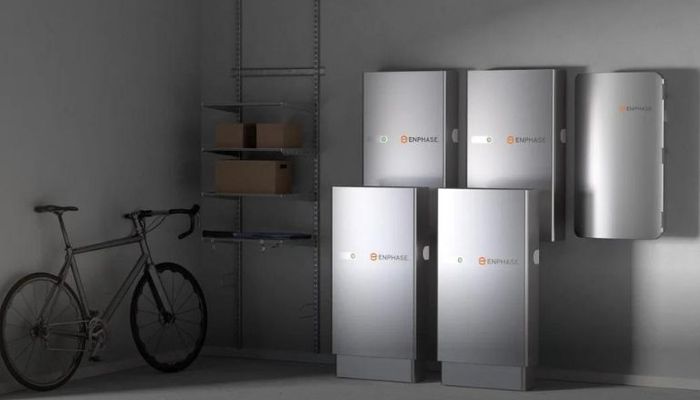How to Size an Off-Grid Solar System

By Todd Evirs of GoGreenSolar
If you’re wondering how to calculate an off-grid solar system that meets your needs, you’ve come to the right place.
I’ve lived off grid with my family of four since 2008 and designed and sold off-grid solar systems for over ten years. I follow a specific method when designing and putting together an off-grid solar system.
First, I look at three critical areas of your off-grid needs. Then, I size the solar system correctly based on those values.
To calculate an off-grid solar system, ask yourself these questions:
- What is your peak power demand?
- What is your daily use in kWh?
- What is your nightly use in kWh?
We cover this process in depth in our Complete Off-Grid System Design Guide, but here's a brief overview.
1. What is your peak power demand?
What are the electrical loads that you will need to run? Will they all run at the same time, or can you rotate the loads?
For example, if someone is making toast, can you use the vacuum at the same time? By making small changes in behavior or adjusting to minor inconveniences, you can save thousands of dollars by not purchasing multiple inverters.
Some loads can run the same without staggering usage, such as the washing machine and the well pump, or the refrigerator and the clothes dryer. To get an accurate figure, you’ll want to research your appliances’ wattage usage while running, then add up all the likely loads or single largest load that you would need to run.
You’ll also need to pay attention to the starting surges for any motors or compressors, typically listed as LRA (lock rotor amps). Leave yourself a little headroom when choosing the inverter size.
Pro-tip: You don’t have to worry about small things like modems, routers, LED lights (within reason) or phones — large loads like refrigerators, laundry or HVAC are most critical.
2. What is your daily use in kWh?
To determine your daily kWh usage, try to compute a figure based on the energy star ratings of your major appliances, or have an energy audit done.
If you’re currently using a grid-tie solar system and plan on having similar electrical demand, you can take your monthly usage and divide it by 30. This number will help size the solar array (how many watts of solar panels you’ll need.)
3. What is your nightly use in kWh?
This number is essential for sizing your battery bank. A standard refrigerator uses approximately 1 to 1.5 kWh per night. Your TV and streaming device might account for another 0.5 kWh or so.
Most well-designed off-grid homes use about 3 to 4 kWh per night (including the inverter’s self-consumption). If you have additional freezers or refrigerators, or any nighttime HVAC circulating devices, you’ll want to get an accurate figure so you don’t end up with a battery bank that is too small for your needs.
Calculating an off-grid system based on budget
Another option is to buy an off-grid system based on your budget. If you have a budget established, you can buy the best system in your price range and learn to live within the means of the system.
Shop off-grid solar systems from GoGreenSolar.
We’ll let you know the realistic capabilities of the inverter, solar array and battery bank for any of our pre-designed off-grid systems. Inverters have a constant wattage rating, along with a max wattage (or surge rating). Your solar array will have a maximum daily output of kWh. Lastly, the battery bank will have a maximum number of useable kWh per cycle.
Off-grid solar system battery banks
It is typical to size your battery bank to a one-day cycle. This way, you’ll have enough charging amps to keep your battery bank adequately maintained.
Lead-acid batteries, including AGM type, will generally see about 10 to 15 charging amps per 100 amp hour of storage capacity. For example, if you have an 80 amp charge controller maxed out with solar on a 48v system, that equals roughly 4,000 watts of solar. This size solar array (under ideal conditions with a 5-hour sun window and a 50% depth of discharge) will reliably charge a battery bank up to 800 amp hours in a single charge cycle.
Depth of discharge is always a factor, as well as the number of good sun hours in your area. If you don’t have enough solar power, you can also rely on supplementing with a generator and inverter charger to keep the battery bank charged as needed. Plan to use about 30% of your battery bank’s total capacity for a longer life expectancy.
Overall, you can expect 3 to 10 years of life for a lead-acid (flooded or sealed) battery bank. With proper care and minimal usage, these batteries will last longer.
Note that lithium batteries don’t work the same as lead-acid batteries and adhere to different rules.
Start your off-grid journey with GoGreenSolar
Ready to make the switch to off-grid solar? We’re here to help!
GoGreenSolar’s off-grid solar kits come with everything you need to build a successful off-grid PV system. We’ll also work with you to determine your configurations, and our certified NABCEP professionals can guide you throughout the entire installation process.






